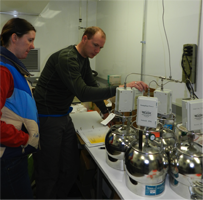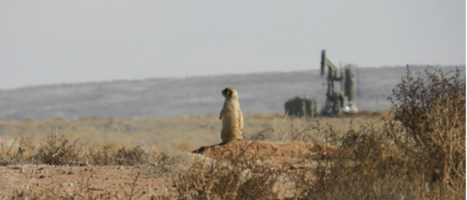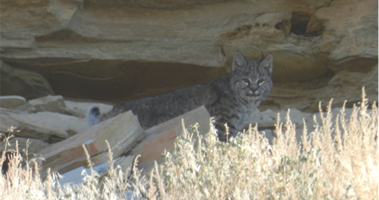
Setting the timers for collection of hydrocarbon or volatile organic compound (VOC) samples at the Roosevelt site. Photo by Randy Martin.
Feb. 18, by Dr. Randy Martin, Utah State University. Dr. Gabrielle Patron’s description of the wintertime ozone study in the Utah’s Uintah Basin have detailed the goals and some of the measurements that have been conducted by NOAA, CIRES, and cooperating investigators, and it is my pleasure to describe some of the work that the Utah State University (USU), USU Energy Dynamics Laboratory, and the Utah Division of Air Quality have brought to the study. Our group is responsible for two tasks within the overall study: 1) set up and maintenance of about two dozen ozone monitors distributed throughout the entire Uintah Basin and 2) establishing long-term air quality monitoring stations at Horse Pool – the production field site of most of the NOAA and CIRES studies at Roosevelt and one of the main population centers within the Basin.
The distributed ozone sites are designed define the spread and extent of the ozone pollution within the air shed and serve to validate a similar study, but more limited, which we conducted last year. We have also added week-long exposure samplers at some of the distributed sites to get a general idea of the distribution of the so-called “precursor” species which lead to ozone formation, namely oxides of nitrogen (NOx) and volatile organic compounds (VOCs). The long term Horse Pool and Roosevelt sites, at which we monitor many of the same parameters as the NOAA and CIRES investigators, will operate well past the February focus of the bulk of the larger study, and are planned to keep collecting data for the next two or three years to examine longer-term trends and season-to-season visibilities.
Even though the “wintertime” study this year has been short on winter, many of the investigators have uncovered fascinating, interesting, and sometimes unexpected findings about the air quality and meteorology of the Uintah Basin. Additionally, it has given us investigators the amazing opportunity to work on a very unique air quality issue in an interesting outdoor setting with an incredible variety of extremely intelligent and entertaining collaborators.


